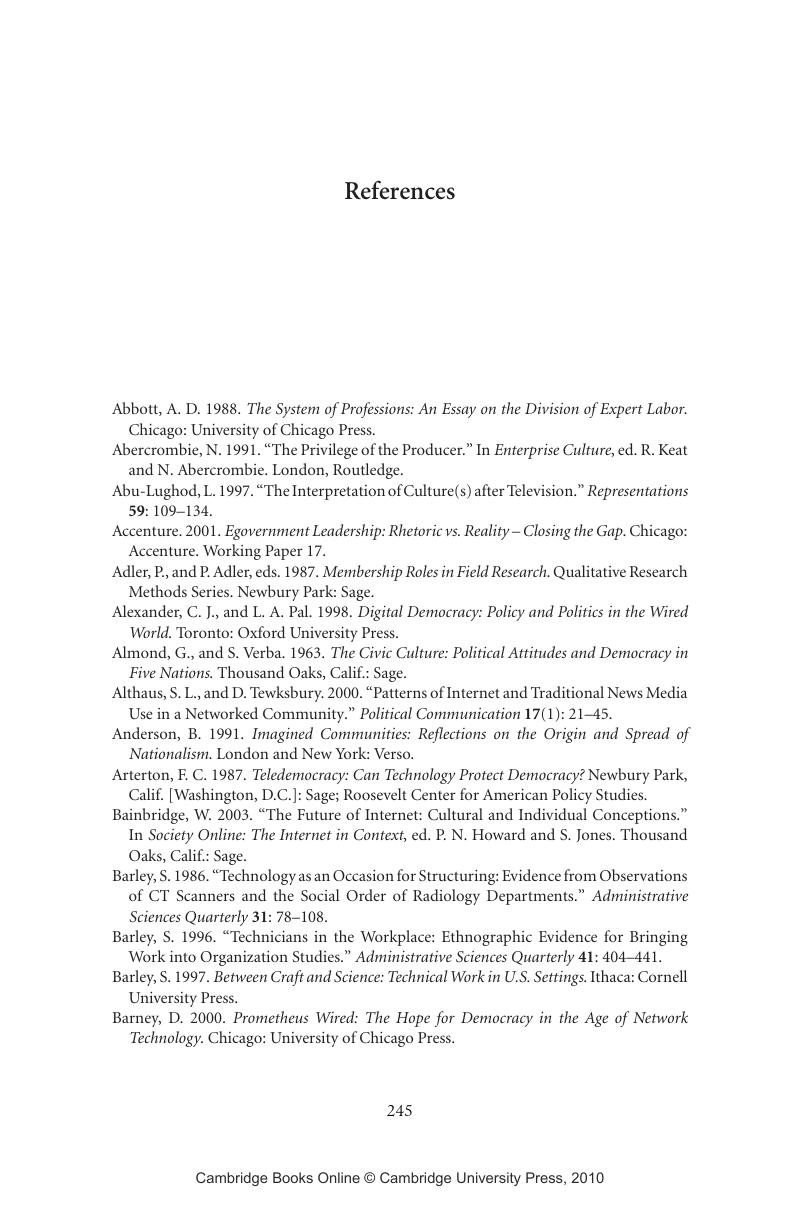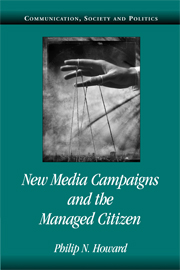Book contents
- Frontmatter
- Contents
- List of Tables and Figures
- Acknowledgments
- Prologue: The Flows of Information in Competitive Politics
- Introduction: The Hypermedia Campaign
- 1 Political Communication and Information Technology
- 2 Producing the Hypermedia Campaign
- 3 Learning Politics from the Hypermedia Campaign
- 4 Organizational Communication in the Hypermedia Campaign
- 5 Managed Citizenship and Information Technology
- Appendix: Method Notes on Studying Information Technology and Political Communication
- Glossary
- References
- Index
- Titles in the series
- References
References
Published online by Cambridge University Press: 15 December 2009
- Frontmatter
- Contents
- List of Tables and Figures
- Acknowledgments
- Prologue: The Flows of Information in Competitive Politics
- Introduction: The Hypermedia Campaign
- 1 Political Communication and Information Technology
- 2 Producing the Hypermedia Campaign
- 3 Learning Politics from the Hypermedia Campaign
- 4 Organizational Communication in the Hypermedia Campaign
- 5 Managed Citizenship and Information Technology
- Appendix: Method Notes on Studying Information Technology and Political Communication
- Glossary
- References
- Index
- Titles in the series
- References
Summary

- Type
- Chapter
- Information
- New Media Campaigns and the Managed Citizen , pp. 245 - 260Publisher: Cambridge University PressPrint publication year: 2005



